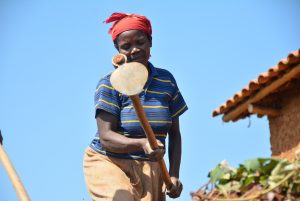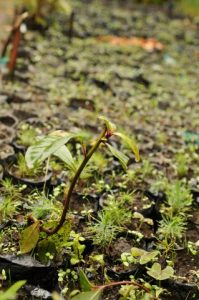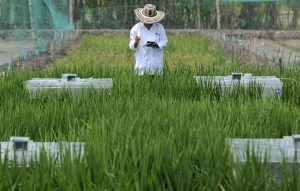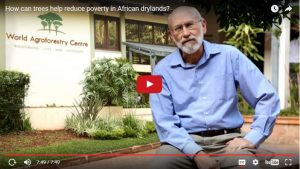 Rwanda has been confronted by the vagaries of a changing climate in recent years. Hailstorms, floods, strong winds, heavy rains leading to landslides, prolonged droughts and changed weather patterns have become more recurrent, making seasons increasingly unpredictable and traditional indicators no longer suitable. This has many implications for the mostly rain-fed agriculture sector in Rwanda, which is also the main source of subsistence for the majority of the country’s population. Agriculture contributes to 30% of the GDP, whereas pastoralism, practiced only in small pockets of dry areas in the country, contributes to 10% of the GDP.
Rwanda has been confronted by the vagaries of a changing climate in recent years. Hailstorms, floods, strong winds, heavy rains leading to landslides, prolonged droughts and changed weather patterns have become more recurrent, making seasons increasingly unpredictable and traditional indicators no longer suitable. This has many implications for the mostly rain-fed agriculture sector in Rwanda, which is also the main source of subsistence for the majority of the country’s population. Agriculture contributes to 30% of the GDP, whereas pastoralism, practiced only in small pockets of dry areas in the country, contributes to 10% of the GDP.
Setting the base
The CGIAR Research Programme on Climate Change, Agriculture and Food Security (CCAFS) and the World Agroforestry Centre (ICRAF) in collaboration with the International Center for Tropical Agriculture (CIAT) are leading the research-based monitoring and evaluation component of the Rwanda Climate Services for Agriculture project.
“Community members interviewed said they often lack access to climate information, more so the women. Farmers are therefore less equipped to adopt climate-smart practices that can boost their agricultural production during times of climate shocks,” said Jeanne Coulibaly, an economist at the World Agroforestry Centre. “Expanding the dissemination of climate information services tailored to the needs of end-users, and increasing their capacity to use the information is fundamental to improving farmers’ resilience to climate change and variability.”
Originally published on the website of the CGIAR Research Program on Climate Change and Food Security (CCAFS).
Click here for the full story
 Kuki Njeru’s eyes sparkle as she discusses her bamboo business. “There’s immense potential in restoring the gullies with bamboo,” she says. “Not only does it grow well on degraded land, it helps stabilize soils and prevent erosion as well.”
Kuki Njeru’s eyes sparkle as she discusses her bamboo business. “There’s immense potential in restoring the gullies with bamboo,” she says. “Not only does it grow well on degraded land, it helps stabilize soils and prevent erosion as well.”

 As countries shift from mitigation commitments to action in the
As countries shift from mitigation commitments to action in the  Dr. Dennis Garrity talks about the collaboration between World Agroforestry Center, Kenya Forestry Research Institute and Better Globe Forestry Ltd to reduce poverty in Kenya by helping farmers earn an income through dryland tree planting.
Dr. Dennis Garrity talks about the collaboration between World Agroforestry Center, Kenya Forestry Research Institute and Better Globe Forestry Ltd to reduce poverty in Kenya by helping farmers earn an income through dryland tree planting. Rwanda has been confronted by the vagaries of a changing climate in recent years. Hailstorms, floods, strong winds, heavy rains leading to landslides, prolonged droughts and changed weather patterns have become more recurrent, making seasons increasingly unpredictable and traditional indicators no longer suitable. This has many implications for the mostly rain-fed agriculture sector in Rwanda, which is also the main source of subsistence for the majority of the country’s population. Agriculture contributes to 30% of the GDP, whereas pastoralism, practiced only in small pockets of dry areas in the country, contributes to 10% of the GDP.
Rwanda has been confronted by the vagaries of a changing climate in recent years. Hailstorms, floods, strong winds, heavy rains leading to landslides, prolonged droughts and changed weather patterns have become more recurrent, making seasons increasingly unpredictable and traditional indicators no longer suitable. This has many implications for the mostly rain-fed agriculture sector in Rwanda, which is also the main source of subsistence for the majority of the country’s population. Agriculture contributes to 30% of the GDP, whereas pastoralism, practiced only in small pockets of dry areas in the country, contributes to 10% of the GDP.